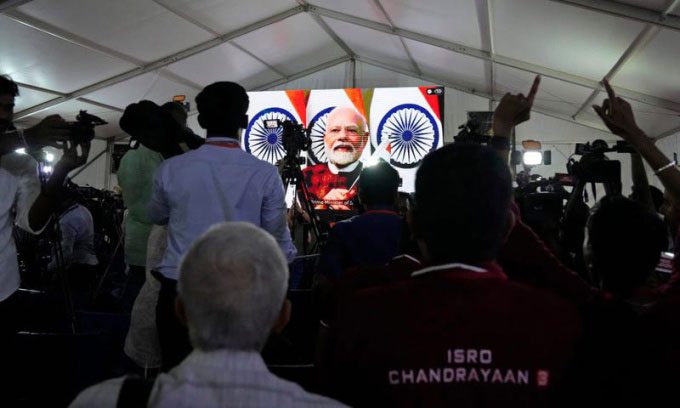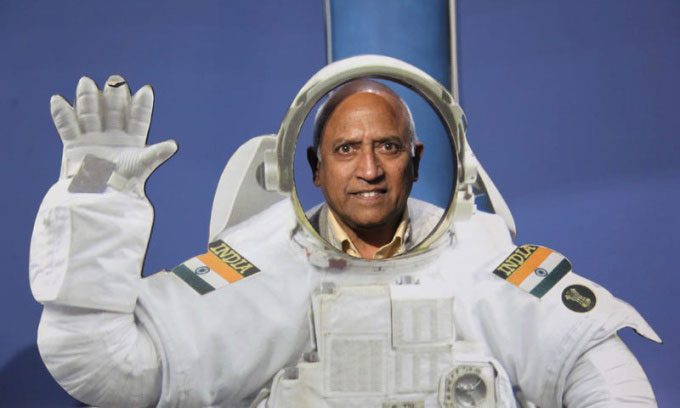While India celebrated the successful landing of the Chandrayaan-3 spacecraft on August 23, Prime Minister Narendra Modi confirmed that the country plans to send humans to the Moon in the near future.
The Vikram lander of the Chandrayaan-3 mission overcame all challenges to land near the Moon’s south pole on the night of August 23, making India the first country to land a spacecraft in this region and the fourth nation overall to achieve a lunar landing, following the Soviet Union, the United States, and China.

Staff from the Indian Space Research Organisation (ISRO) watch Prime Minister Narendra Modi speak after the Chandrayaan-3 landed on the Moon on August 23. (Photo: Aijaz Rahi/AP)
“This event will certainly elevate India onto the international stage as an emerging space power,” commented Robert Braun, head of the Space Exploration Center at the Johns Hopkins University Applied Physics Laboratory.
Building on the success of Chandrayaan-3, India will continue its momentum by launching its first crewed mission to the Moon, Prime Minister Modi stated in Hindi during a live broadcast of the landing. “India is on the Moon,” Modi declared. He also mentioned that the country will consider future crewed flights.
Previously, India announced plans to launch a crewed mission to low Earth orbit by the end of 2024, according to the Times of India. “India is demonstrating and proving that the sky is not the limit,” Modi added.
India intends to launch two uncrewed missions, Gaganyaan 1 and 2, into space first, with the first flight expected to occur later this year, according to ISRO. These launches will help test the capabilities of the national rocket LVM3, which also launched Chandrayaan-3 on July 14. Following this, India will launch its first crewed spacecraft aimed at sending three astronauts to low Earth orbit for a three-day mission.

Rakesh Sharma pictured in his Indian astronaut suit. (Photo: Pallava Bagla/Corbis).
To date, the first and only Indian citizen to fly in space is astronaut Rakesh Sharma. In 1982, Sharma was selected as an astronaut for a collaborative mission between the Soviet Union and India. On April 3, 1984, he flew aboard Soyuz T-11 with two Soviet cosmonauts, Yury Malyshev and Gennady Strekalov, to the Salyut 7 space station for experiments. After completing their mission, the three astronauts landed in Kazakhstan on April 11, 1984.


















































